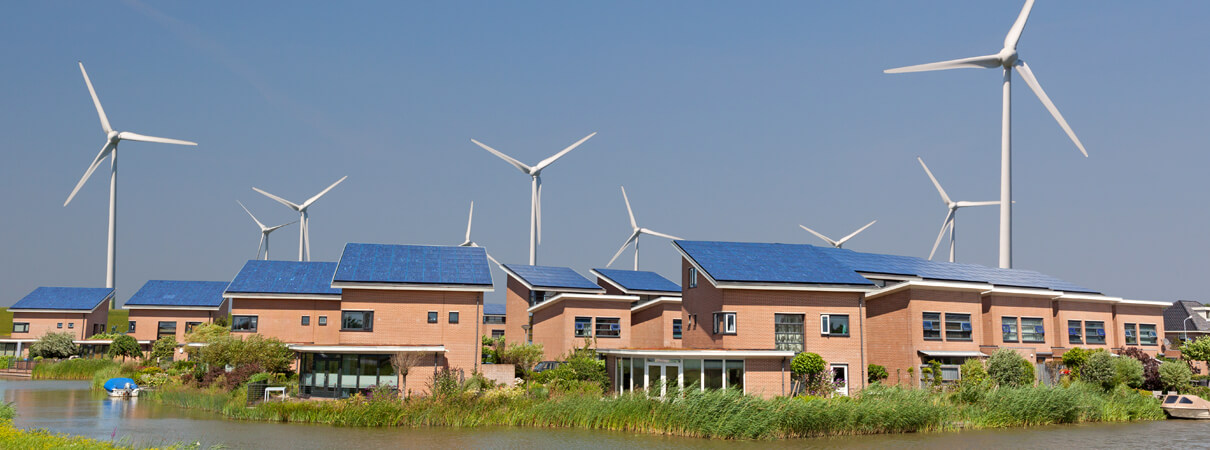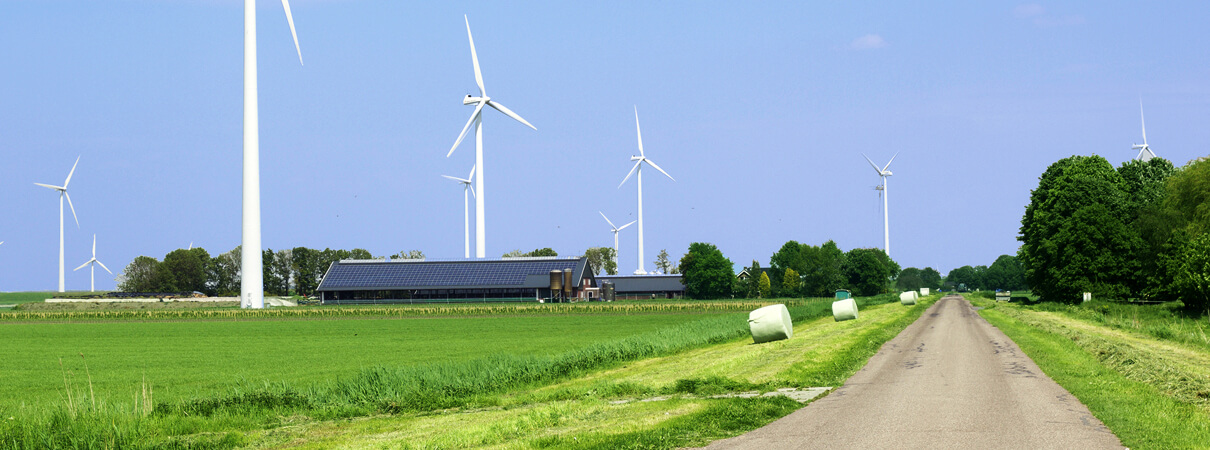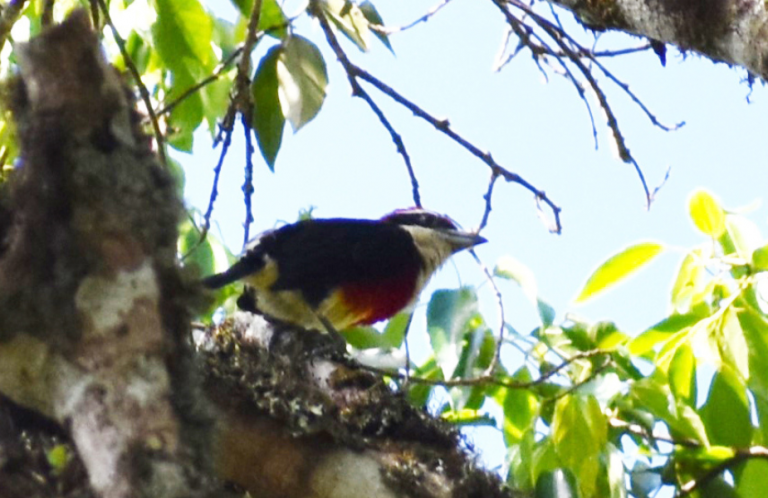Wind Energy and Birds FAQ — Part 3: Take Action
ABC often receives questions and comments regarding wind energy development and its impacts on birds and other wildlife. In this blog post — the final in a three-part series — Michael Hutchins, Director of ABC's Bird-Smart Wind Energy Campaign, answers questions about how readers and individuals can support bird-smart wind energy solutions.
First post in this series: Understanding the Threat Wind Energy Poses to Birds. | Second post in this series: Bird-Smart Wind Energy Solutions. (See a full list of references at the end of the post.)
What can our readers do to support bird-smart wind energy solutions?
First, understand that although climate change is real and must be addressed, we should not be rushing to deploy solutions that damage our continent's ecologically and economically important birds and bats and their habitats. Beyond their inherent value, these animals perform critical ecological services — such as pest control, pollination, and seed dispersal — that are worth billions of dollars to national economies and enhance the quality of all our lives9.
Second, make efforts to keep informed.
- Find out about large-scale commercial wind energy projects planned for your community.
- Go to town meetings and express concern about environmental impacts.
- Ask questions about the independence and scientific integrity of pre-construction risk assessments. These are often conducted by paid consultants to the wind industry.

Individuals can help support bird-smart wind energy solutions by learning more about local wind energy development and engaging with industry representatives, local elected officials, and neighbors and community members. Photo by esbibeldijk / Shutterstock
Speak up to wind energy companies and regulators.
- Push for the company to provide third-party, independent, standardized monitoring of bird and bat kill at the project with all data going directly to state and federal regulators.
- Ask to see and evaluate the mitigation plan and understand what forms of mitigation have proven successful (i.e., proper siting and curtailment of the turbine's blades) versus those that are untested or unproven.
- Contact and express concern to the power companies that plan to purchase the energy produced.
Rally the support of others.
- Form a group to monitor and question developer activities.
- Reach out to local reporters about the issue and do interviews with them. Be vocal with your concerns.
- Draft op-eds and letters to the editor to local newspapers and magazines expressing your concerns.
And finally, forge alliances and educate others.
- Enlist the help of experts on wind energy and its impacts on wildlife to conduct relevant analyses (e.g., ornithologists, bat biologists, American Bird Conservancy, local Audubon and ornithological societies).
- If state- or federally-protected species are at risk, contact state and federal wildlife agencies to express concern.
- Contact and express concern to your elected representatives at the community, state, and national levels, and especially to your county or state energy siting board.
- Develop a website, Facebook page, listserv, etc. to facilitate communication.
- Offer to speak or distribute materials at local community events, groups, or other gatherings.
Sign up for ABC's eNews to learn how you can help protect birds
Are there ways to address climate change without building thousands of new wind turbines?
Absolutely. There are a variety of ways that we could be addressing climate change without having to build tens of thousands of new wind turbines and hundreds of miles of new power lines and towers.
First and foremost, to slow climate change, it's essential that we stop rampant deforestation and protect our remaining ecosystems, such as tropical rainforest, coastal mangrove forests and wetlands2, 5, 6 and their biodiversity1.
Second, we should push for improved energy efficiency and conservation4. And third, we should probably be eating less meat. This is obviously a personal choice, but it's a fact that conventionally raised domestic livestock is a major contributor to greenhouse gasses3.

Taking action to support bird-smart wind energy solutions can help combat climate change, but so can energy conservation, habitat restoration, and more. Photo by Djomas / Shutterstock
Finally, perhaps the best alternative to large-scale commercial wind and solar energy — both of which can be bad for birds when poorly placed in the environment8 — is distributed solar energy on our already-built environment. We have the technology to put solar panels on our roads, in our windows, and on existing structures, such as buildings and parking lots. Keeping energy production local will also reduce the need to use power lines and towers to transport the energy produced across the country.
The biggest challenge to this approach will be the power and utility companies themselves. As the technology allows for more energy independence, power and utility companies will fight this change as it limits their ability to profit.

Fully one-third of our native bird species are in need of concerted conservation action in order to ensure their future. Taking action to support bird-smart wind energy solutions can help. Photo by Niek Goossen / Shutterstock
Any final thoughts?
Our irreplaceable birds and bats should not be “collateral damage” in our fight against climate change. Our birds are already in serious trouble, with fully one-third of our native species currently in need of concerted conservation action in order to ensure their future7. We could be doing so much better.
Editor's note: Learn more about Bird-Smart wind energy. | Read the first post in this series here: Understanding the Threat Wind Energy Poses to Birds. | Read the second post here: Bird-Smart Wind Energy Solutions.
 Michael Hutchins, Director of American Bird Conservancy's Bird-Smart Wind Energy Campaign, earned his Ph.D. in animal behavior at the University of Washington. Prior to ABC, Michael was Director/William Conway Endowed Chair, Department of Conservation and Science, at the Association of Zoos and Aquariums for 15 years, and Executive Director/CEO at The Wildlife Society for seven years. He has authored over 220 articles and books on various topics in wildlife science, management, and conservation, and has traveled to over 30 countries to pursue his passion for conservation.
Michael Hutchins, Director of American Bird Conservancy's Bird-Smart Wind Energy Campaign, earned his Ph.D. in animal behavior at the University of Washington. Prior to ABC, Michael was Director/William Conway Endowed Chair, Department of Conservation and Science, at the Association of Zoos and Aquariums for 15 years, and Executive Director/CEO at The Wildlife Society for seven years. He has authored over 220 articles and books on various topics in wildlife science, management, and conservation, and has traveled to over 30 countries to pursue his passion for conservation.
References
- Bello, C., Galetti, M., Pizo, M.A., Fernando, L., Magnago, S., Lima, R.A.F., Peres, C.A., Ovaskainen, O., and Jordano, P. 2015. Defaunation affects carbon storage in tropical forests. Science Advances 1 (11): e1501105. DOI: 10.1126/sciadv.1501105, DOI: 10.1126/sciadv.1501105.
- Enochs, K. 2017. Study: Restoring wetlands could help fix climate change. Voanews.com.
- Gill, M., Smith, P., and Wilkinson, J.N. 2010. Mitigating climate change: The role of domestic livestock. Animal 4 (3): 323–333, doi:10.1017/S1751731109004662.
- Huntington, H., and Smith, E. 2011. Mitigating climate change through energy efficiency: An introduction and overview. The Energy Journal 32, DOI: 10.5547/ISSN0195-6574-EJ-Vol33-SI1-1.
- IUCN. 2017. Mangroves and marshes key in the climate change battle. Huffington Post.
- Martin, T. and Johnson, J. 2016. The best way to protect us from climate change? Save our ecosystems. The Conversation.com.
- North American Bird Conservation Initiative. 2016. State of the Birds, 2016.
- Sahagun, L. 2016. This Mojave Desert solar plant kills 6,000 birds a year. Here's why that won't change any time soon. Los Angeles Times.
- Sekercioglu, C. H., D. G. Wenny, and C. G. Whelan, editors. 2016. Why birds matter: avian ecological function and ecosystem services. University of Chicago Press, Chicago, Illinois, USA.


















































